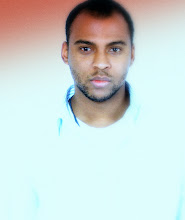USA TODAY - Video-editing software gets put to the test
This story has been sent from the mobile device of Bombastic4000@gmail.com. For real-time mobile news, go to m.usatoday.com.
By Jefferson Graham, USA TODAY
So you just bought a new, tapeless high-definition video camera and want to start editing your footage to show off on DVDs and the Web.
But you're stymied. Many cameras record video in a format that has become the new high-def standard, AVCHD, but it's not yet compatible with popular video-editing programs such as Adobe Premiere Elements, Windows Movie Maker or Roxio's Easy Media Creator 10. You probably can't even get the clips to play on your computer because Windows Media Player and QuickTime Player can't handle it, either.
What to do?
You must buy software that works with AVCHD. Choices for Windows users include Pinnacle Studio 12 ($99), Sony Vegas Platinum ($99) and Ulead VideoStudio ($69). For Mac owners there's Apple's iMovie '08 (free with new Apple computers), Final Cut Express ($199) or Final Cut Studio ($999).
Our take: For Windows users, best-selling Studio 12 is the easiest to master. More advanced video users might want to consider Vegas, which has more features but will take longer to learn.
For Apple users, I recommend steering clear of iMovie, which has been rejiggered into a dumbed-down program that's actually now harder to use. You'll have to step up to the $199 Final Cut Express, which has many of the features that make the $999 Final Cut Studio one of the top choices for industry professionals and film students. Here's a look at both Pinnacle Studio 12 and Final Cut Express.
Using Studio 12
To get started with Studio 12, just import your clips, trim them with the razor blade editing tool, maybe put in some background music and titles, and you've got yourself a production.
The new version of Studio 12, recently out, is a major upgrade, primarily because of one standout feature.
Are you familiar with the multiple-image "video walls" that open Sunday sports TV shows? Studio 12's "montage" feature gives you the tools to add similar polish to your production.
Editing AVCHD clips in Studio 12 is no different from editing standard clips, with one exception. While you import the clips, you'll be waiting and waiting for them to load.
That is because AVCHD editing takes a lot of horsepower. Software companies recommend a dual-core processor (2.4 GHz minimum) and 2 gigabytes of RAM. I have 4 GB of RAM, and even that's not enough. My AVCHD clips stall regularly in many editing programs.
You also need mucho space on your hard drive. Video clips take lots and lots of room: One hour of AVCHD footage consumes roughly 7 GBs of space. (Most video editors deal with space issues by saving their footage to external hard drives.)
What I don't like about Studio 12: Other programs give you multiple video and audio tracks. Studio 12 only has two. That's not enough if you wanted to, say, put multiple layers of video or audio on your production.
Studio also works with fewer file formats than some others. It's not compatible with Apple's QuickTime, for instance, which is heavily used on the Web and comes bundled in many home computers via Apple's iTunes.
That Studio doesn't work with QuickTime is a pain. If your son in college sends you a QuickTime clip to import into the family album, you're out of luck, because Studio won't open it.
Using Final Cut Express
At $199, Final Cut Express has nearly all the best features of Final Cut Pro, and it's a great introduction to the world of Final Cut editing.
But even this "Express" version, at first glance, doesn't seem as easy to master as a beginner's program like the old iMovie or Studio 12. Because there are so many potential options, it can seem overwhelming.
But take a deep breath; it's not that hard. As with Studio, you import clips, put them on the timeline, trim with a razor tool, add background music and you've got a little movie.
If you're stuck and can't figure out how to do something, no problem. It is such a popular program that it's easy to find online user forums. Just type your question into a search engine to find a helpful group.
Where Apple really confused me was in how to import AVCHD clips into Final Cut. Instead of simply dragging and dropping clips, you must plug the camera into the computer, click a "log and capture" tab and wait for the clips to arrive.
This can trip you up, for example, if a friend shoots an AVCHD clip on his camera and you want to use it for your project. He can't burn it to a DVD and give it you. It has to come straight from the camera.
That's my main beef with Final Cut.
Bottom line: While working with Final Cut can take longer to master, the results are worth it, because you have so many more options available.
Website address: http://www.usatoday.com/tech/products/2008-08-13-video-camera-tapeless-avchd_N.htm


No comments:
Post a Comment